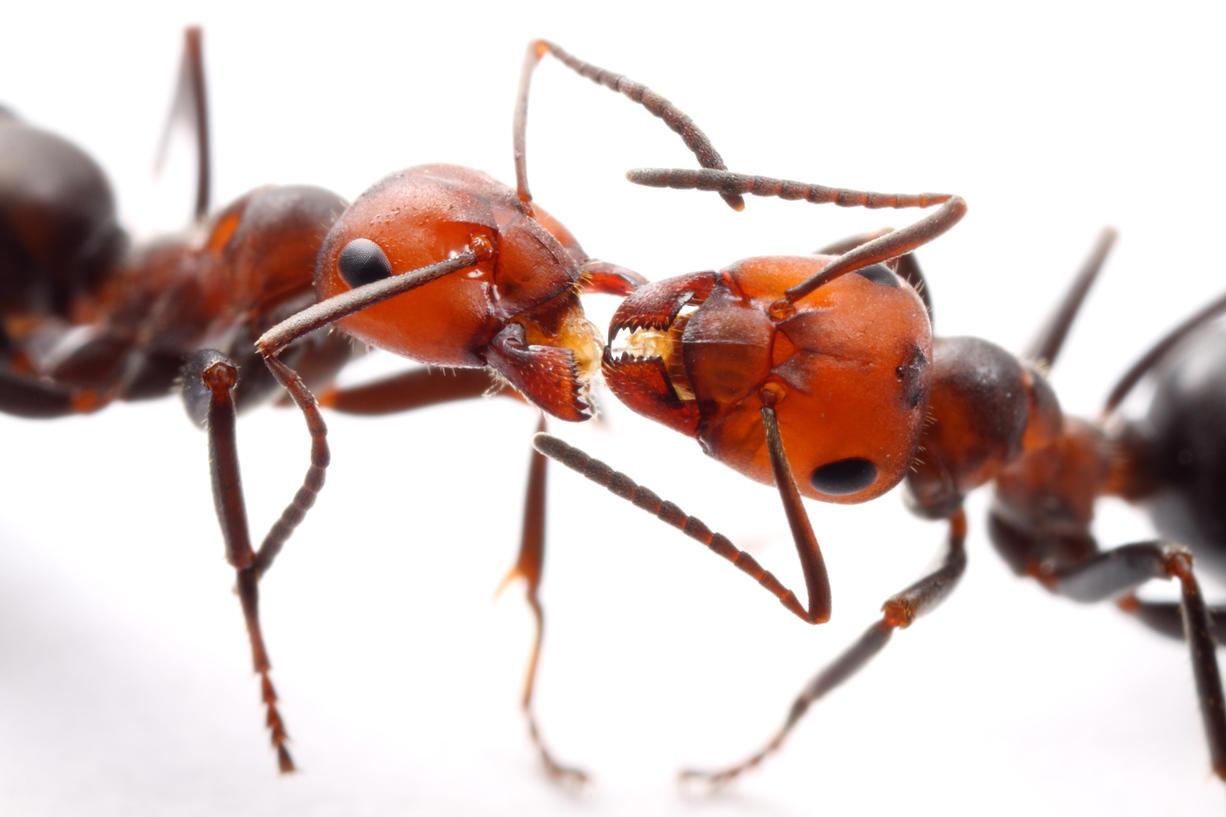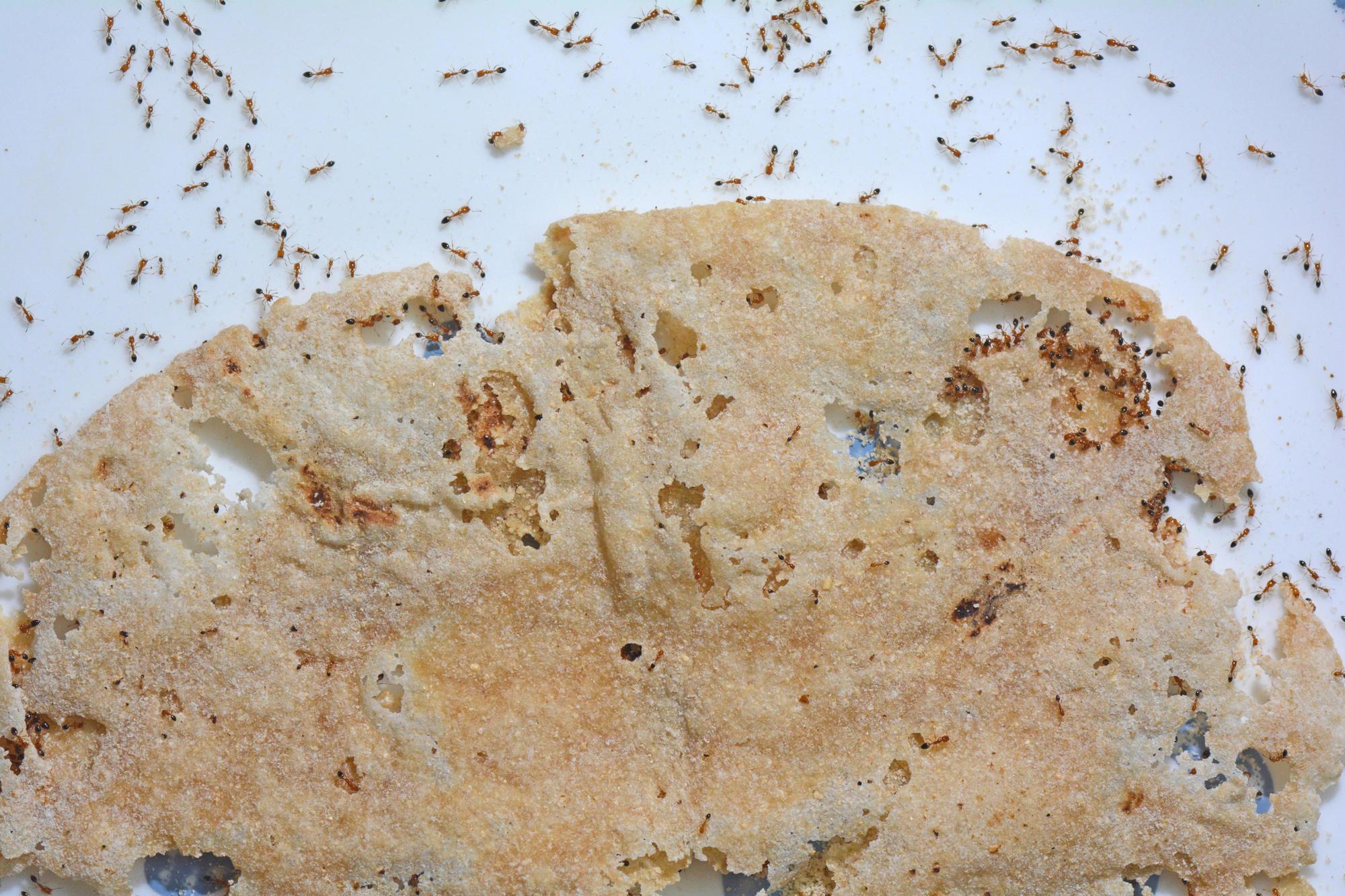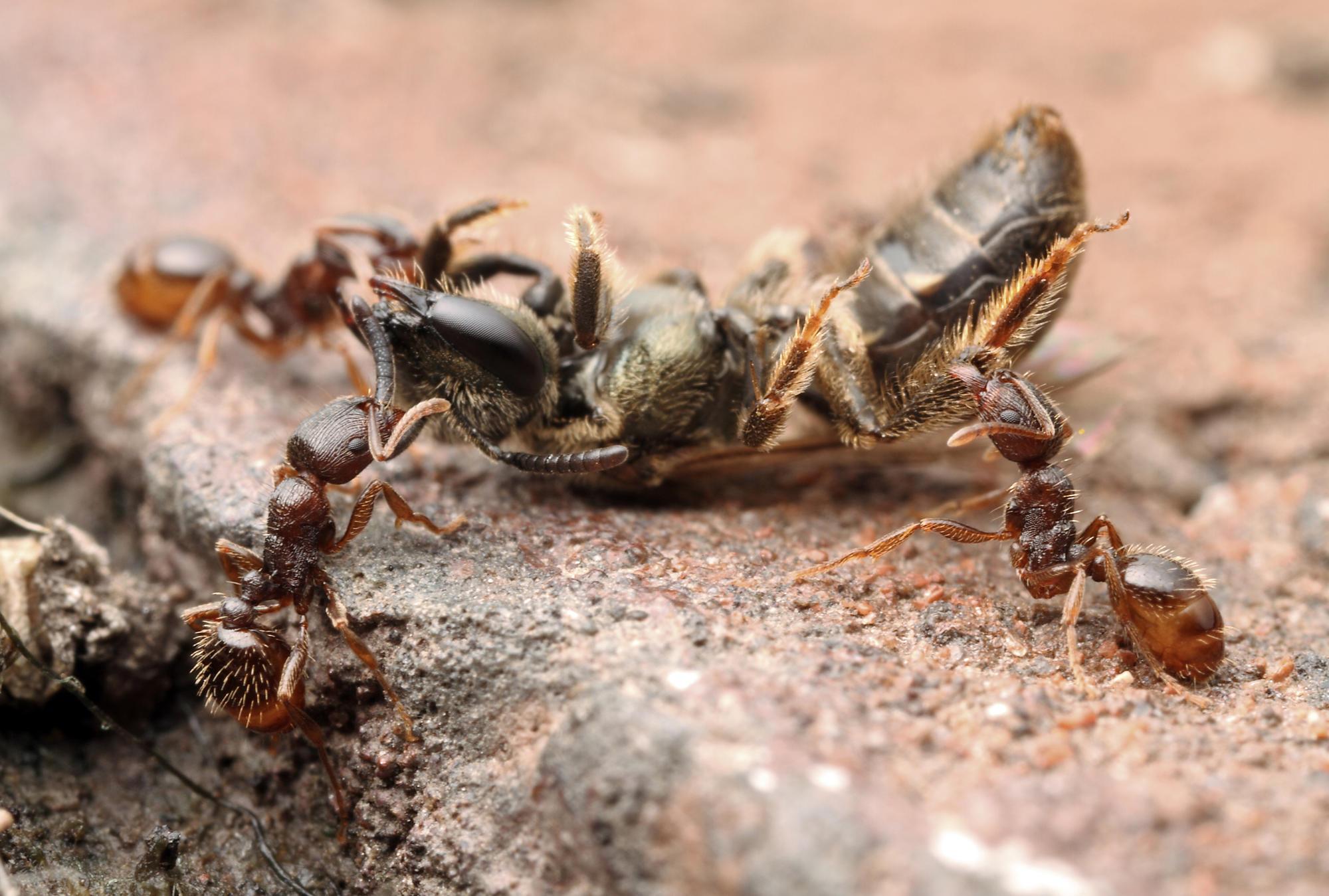Introduction
Ants are one of the most successful creatures on Earth. They colonize most of the planet and are evident in fossil records dating back to Cretaceous times when dinosaurs roamed.
Ants belong to the insect family Formicidae and are closely related to bees and wasps. They are eusocial insects, which means they care for developing young (brood) cooperatively, have overlapping generations within a nest, divide the labor involved in maintaining a colony and have reproductive and nonreproductive members.
Ants develop through complete metamorphosis. Eggs hatch into larvae, which are fed and cared for by adult female worker ants. Larvae grow through a series of molts then pupate, eventually emerging as adults.
Ants invading school buildings is a commonly reported pest problem in the Pacific Northwest. Many ant species are remarkably capable of finding food and moisture and highly efficient at harvesting and transporting their precious cargo back to their nest. Many ants are omnivorous scavengers and will eat a lot of different things. Water is a valuable resource for them.
Many small ants favor foods with a high sugar content. Indoor scout ants wander around in search of food in a seemingly random manner. But after discovering a feast, the ant will collect a small portion and return to the nest, leaving a pheromone trail as she goes.
Foraging ants temporarily store food in a section of their gut called the crop. Later, they regurgitate the food and transfer it to nestmates and brood through a process called trophallaxis. Colonies are described as having a “social stomach” because of how food is distributed and redistributed. If you want to eliminate an ant colony, slow-acting pesticidal baits are a particularly effective solution due to the ants’ efficient redistribution of the toxic bait. In general, ants are beneficial in landscapes, so reducing indoor food and water available to ants could eliminate the need to control colonies.
Finding ants in school
If you find ants indoors, notify your facilities manager or IPM coordinator. They will want to identify the type of ant. Pest management approaches effective for one species can worsen problems with another. Removing conducive conditions, such as food crumbs or incorrectly stored food, may be enough to stop indoor ant activity. Look under furniture, carpets and mats for food crumbs and make sure food is stored in airtight containers or refrigerated.
What Is Integrated Pest Management?
IPM is a form of pest management that begins with pest prevention. Reducing accessible food and water indoors is a critical first step. Pesticidal bait applications are rarely necessary indoors, but experienced IPM staff or pest management professionals can determine if there are indoor nests that necessitate treatment.
Teachers, staff and students
Be on the lookout for foraging ants indoors:
- Report foraging ants immediately. Many species recruit nestmates to newly found food resources within minutes.
- Store all edible classroom items in airtight containers and immediately clean up spilled food or drinks.
- Clean and degrease food-preparation surfaces, microwaves, refrigerators and kitchen appliances.
- Vacuum trailing ants and remove pheromone trails with soapy water. Some ants can sting or bite and spray acid, so wear gloves or use long tongs when cleaning up food items covered in ants.
- Empty trash cans and recycling bins daily and clean them inside and out.
- Rinse pop cans and milk containers with water before placing in recycling receptacles.
Custodians, maintenance and landscape staff
Be on the lookout for potential opportunities that ants could exploit before they are a problem:
- Clean mops, brushes, buckets and dustpans and store them in a way that facilitates rapid drying.
- Repair indoor plumbing leaks and dripping faucets.
- Seal building openings. Windows and doorways should close snugly.
- Eliminate standing water around structures.
- Trim trees and shrubs away from buildings so there is at least a foot of perimeter space between plants and building walls or roof lines.
- Seal cracks in the building foundation and around pipe penetrations into the structure.
- Keep cut wood piles and stacked lumber away from buildings.
- Avoid wood and organic mulch close to buildings.
Information everyone should know
Ants can attack people perceived as a threat to their colony. Some species bite and release defensive acid compounds, which can cause a burning sensation or mild blistering. Some ants sting. Venom effects vary by species, but generally cause immediate pain at the sting site. The most serious health impacts occur when ants sting people who are highly sensitive to the venom and develop severe allergic reactions, which may include life-threatening anaphylaxis. Severe reactions to ant stings are extremely rare in the Pacific Northwest.
Common Pacific Northwest ant species include odorous house ants, pavement ants, western thatching ants, velvety tree ants, moisture ants and carpenter ants. All can be beneficial in landscapes, however:
- Odorous house ants become pests when they forage in buildings.
- Pavement ants become pests when they forage in buildings and create sand and soil piles at building entry points or between pavestones and sidewalk cracks outside. They sting, but people are rarely stung.
- Moisture ants live in rotting wood, and their presence in structural wood indicates a moisture problem.
- Western thatching ants can bite and spray the area with formic acid, causing pain at the bite site.
- Velvety tree ants are nuisance pests when they forage indoors. They are also considered structural pests since they can tunnel through structural wood.
- Carpenter ants are structural pests able to tunnel through wood. They will also forage indoors on protein and sugar-rich foods. Controlling carpenter ants is complex and may necessitate structural beam replacement.
For more information, see Integrated Pest Management for Ants in Schools (PNW 761).





